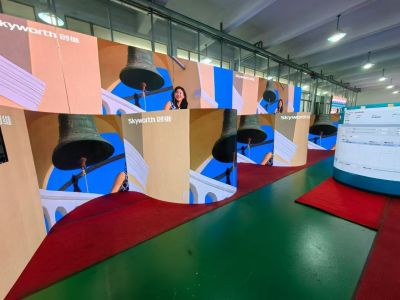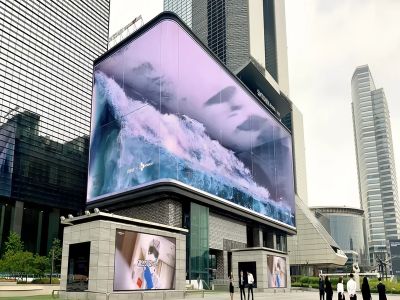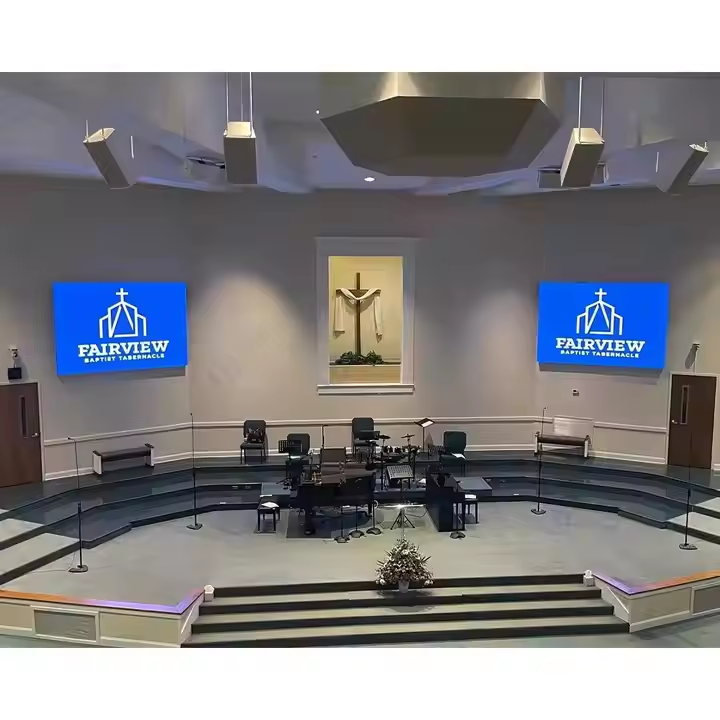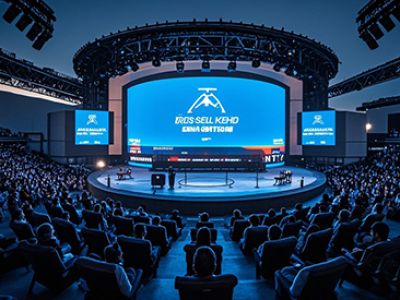How to Choose and Install Church LED Displays: A Guide to the Best Solutions
How to Choose and Install Church LED Displays: A Guide to the Best Solutions
In today's digital age, LED screens are revolutionizing how churches communicate with their congregations. Whether it's for displaying hymns, Bible verses, announcements, or even live streaming events, LED displays have become a critical component in modern houses of worship. This article will guide you through selecting and installing the best LED screen for your church, highlighting key considerations, available options, and offering expert tips on choosing the perfect LED solution.
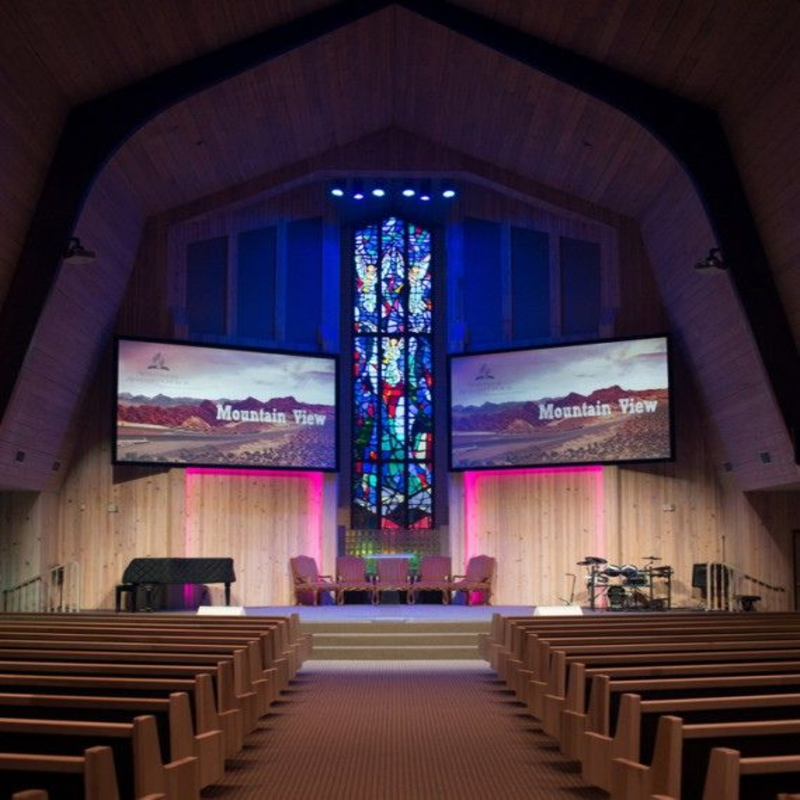
1. Understanding Church LED Displays
A church LED display is a specialized screen designed to provide high-quality visual content to an audience. These displays come in a variety of formats, ranging from LED video walls to LED poster displays and LED curtain screens. Depending on the size of the congregation, location, and purpose of the screen, the right choice varies.
The ideal LED screen for your church will depend on factors such as screen size, resolution, viewing angle, and installation method. Indoor LED screens (such as P3.91 LED displays and P6 LED panels) are ideal for churches with medium to large venues. For larger churches, a 16:9 aspect ratio screen or even a 3D billboard may be the most suitable for creating impactful displays that capture the attention of the congregation.
2. Key Considerations When Selecting Church LED Displays
a) Screen Size & Aspect Ratio
The size of the screen is crucial for ensuring visibility. A 16:9 aspect ratio is common for modern LED screens and provides an optimal display for videos and presentations. A screen that's too small may not be visible from the back of the church, while one that’s too large could overwhelm the space. Consider the size of the sanctuary and the distance from which attendees will view the screen.
b) Resolution & Display Quality
LED displays come in different resolutions, measured by pixel pitch (e.g., P3.91, P4, P6). For indoor settings, a P3.91 LED screen offers a good balance of clarity and cost-effectiveness. Higher pixel pitches such as P2.5 offer exceptional sharpness, ideal for spaces with tight seating arrangements.
For outdoor billboards, especially 3D billboards like those found in Times Square or Tokyo, a high-resolution display is essential for attracting attention. When designing for the church, focus on LED video wall manufacturers that provide high-quality, durable solutions.
c) Brightness and Viewing Angle
The brightness level of an LED display ensures that the screen remains visible even under bright lights, such as those commonly found in churches. Indoor LED screens typically require lower brightness levels than outdoor advertising LED displays, but you should still ensure that the screen brightness can be adjusted for different settings.
The viewing angle is also important, especially if your church has a large seating area. Wide-angle LED screens (often advertised as 160°+ viewing angle) help ensure that all attendees can view the content clearly.
d) Integration with Church Systems
LED screens need to be integrated seamlessly with your existing church technology, such as sound systems, projectors, and lighting. Some LED screen event solutions offer plug-and-play compatibility, while others require more advanced integration, which could involve working with a DJ screen setup or a video wall processor.
3. Choosing Between Rental and Permanent Installation
For many churches, renting an LED display may be a practical solution, especially for special events like conferences, weddings, and Christmas services. Rental video screens for concerts or church events provide flexibility and reduce costs. Rental video walls are available in many sizes and resolutions, often featuring easy setup and teardown for temporary installations.
On the other hand, a permanent LED video wall installation offers long-term benefits, including consistent quality and durability. For this, churches often turn to LED display manufacturers in China, where high-quality yet affordable options are available.
4. Types of LED Screens for Churches
a) LED Video Walls
These are large, continuous displays that can showcase a variety of content, including live broadcasts, video clips, and slideshows. They offer high-impact visuals and can be customized to fit the church's design.
b) LED Poster Displays
Perfect for digital signage, LED poster displays are slim, sleek screens that can be mounted on walls or stand-alone frames. They can show scripture, event details, or live feeds in a clean and modern way.
c) LED Floor Screens
Another creative installation for churches is the LED floor screen, which can display dynamic content underfoot, adding a 3D touch to the worship experience.
d) Interactive LED Screens
For churches looking to engage visitors or allow for dynamic interaction, interactive LED screens can support touch-based input, making them ideal for activities such as interactive Bible studies or digital sermon notes.
5. Installation Process
The installation of church LED screens involves several key steps:
a) Site Survey and Assessment
Before installation, a site survey should be conducted to determine the optimal location and size of the screen. A professional LED display distributor can assist with this to ensure the screen is placed in a spot with optimal viewing for all congregants.
b) Mounting and Rigging
Mounting options depend on the size of the screen. Smaller displays may be mounted directly on a wall, while larger screens may require specialized rigs or trusses to hold them securely. Make sure the mounting system can support the weight and dimensions of the LED screen.
c) Wiring and Power Supply
LED displays require a reliable power source. Professional installation teams should ensure proper wiring and circuit safety to avoid any electrical issues.
d) Calibration and Testing
Once installed, the screen should be calibrated for brightness, color balance, and contrast. Testing the screen in different lighting conditions ensures it performs optimally under various church settings.
6. Maintenance and Cleaning
Maintaining your LED screen involves regular cleaning and checking for potential malfunctions. A typical LED screen is relatively low-maintenance, but dust and dirt can affect the clarity of the display. To clean an LED video wall, use a soft, dry cloth or specialized cleaning products. Ensure that the power is off before cleaning.
For larger screens like the world’s biggest LED jumbotron, professional maintenance services might be required, especially for the most complex installations.
FAQs
Q1: What is the difference between P3 and P6 LED displays?
P3 displays have a finer pixel pitch (3mm), providing higher resolution and clarity, making them suitable for closer viewing distances. P6 displays (6mm pixel pitch) are better for larger spaces where attendees are seated farther from the screen.
Q2: Can I rent an LED screen for special church events?
Yes! Many LED screen rental companies offer flexible solutions for one-time events such as weddings, conferences, and church productions. You can rent a LED video wall or even a 3D advertising billboard for a special event.
Q3: What is the best LED screen size for a church?
The ideal size depends on the church's layout and audience. For most churches, a screen with a size of 16:9 aspect ratio and a pixel pitch of P3.91 to P6 offers a good balance of cost and clarity.
Q4: How do I integrate an LED screen with my church’s audio-visual system?
Most modern LED displays support HDMI or DVI connections, which makes integration relatively straightforward. You may need a video processor or LED processor for more complex setups.
Q5: How long do church LED displays last?
LED displays typically have a lifespan of around 50,000-100,000 hours of use, depending on the quality and type of display. Regular maintenance will extend the lifespan.


